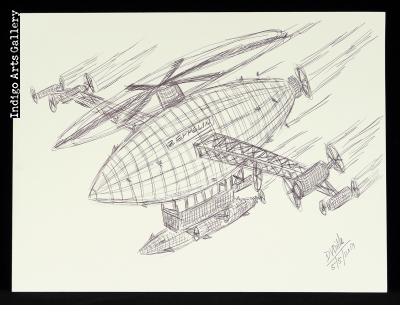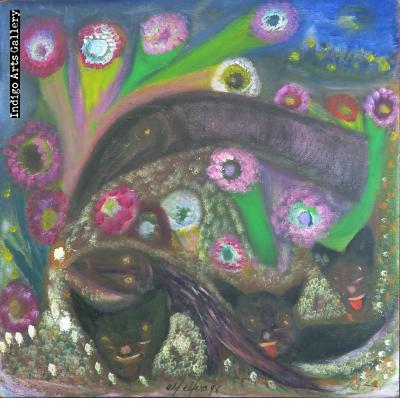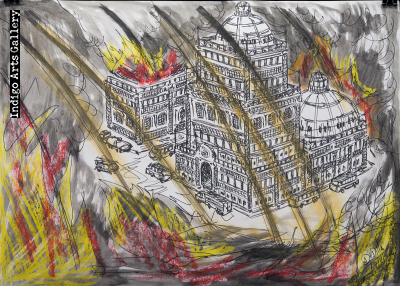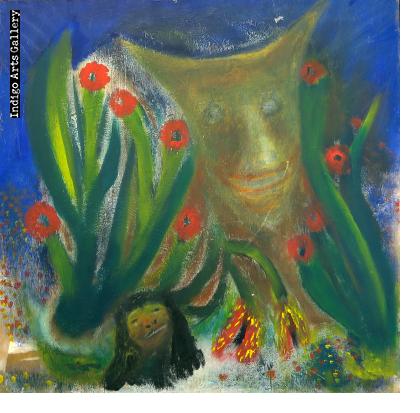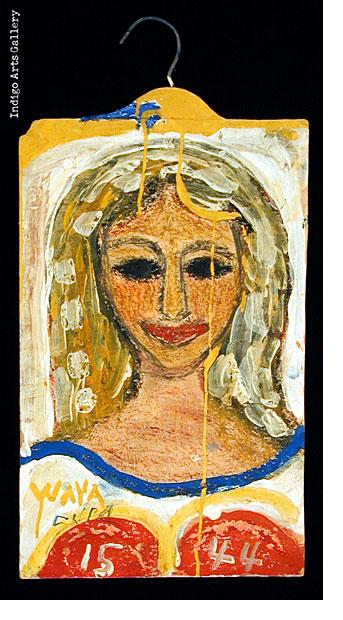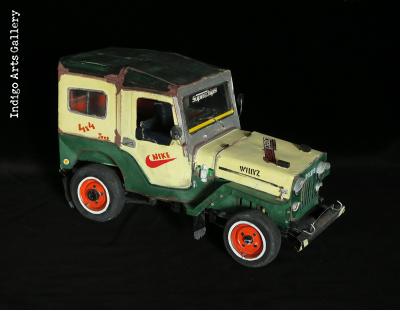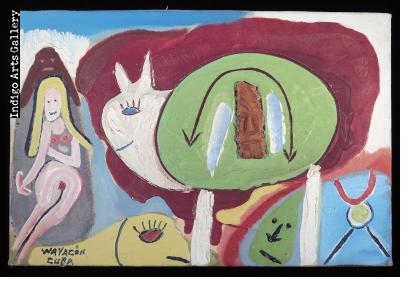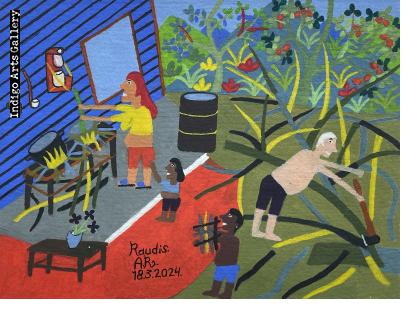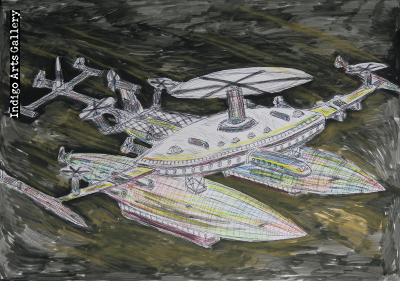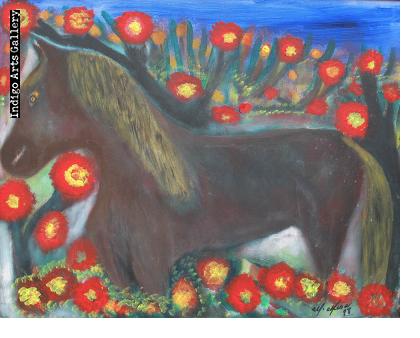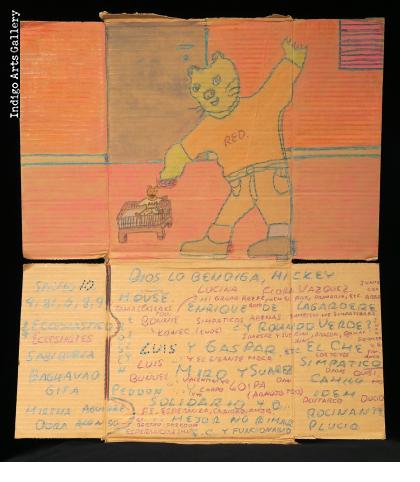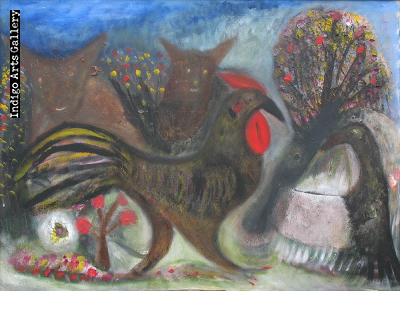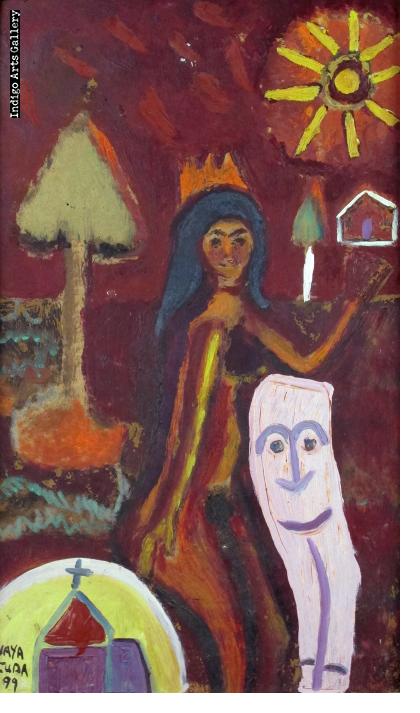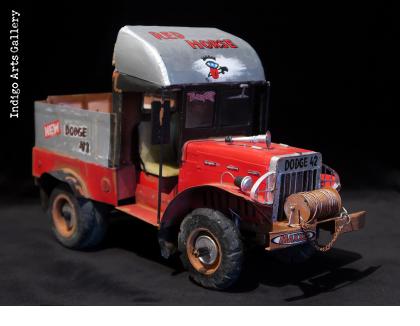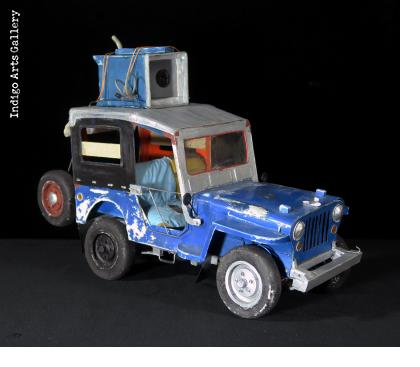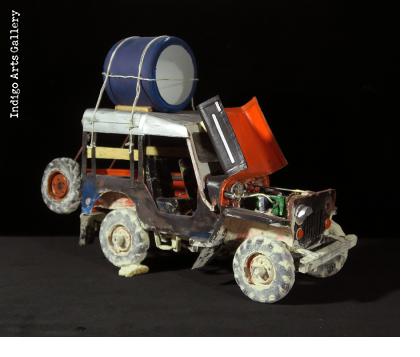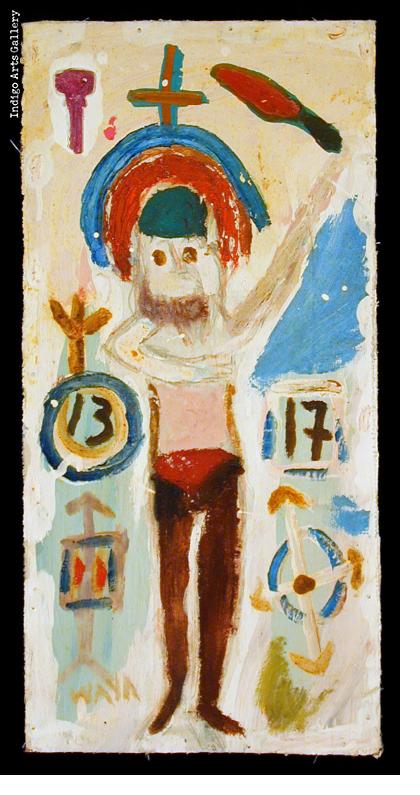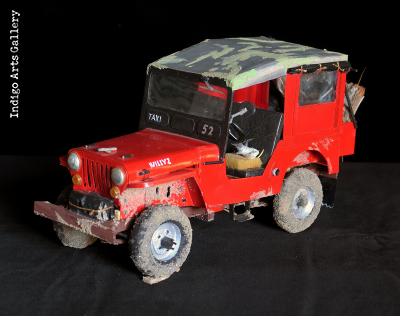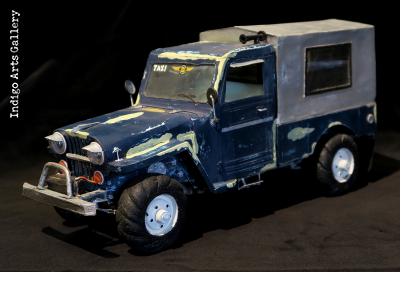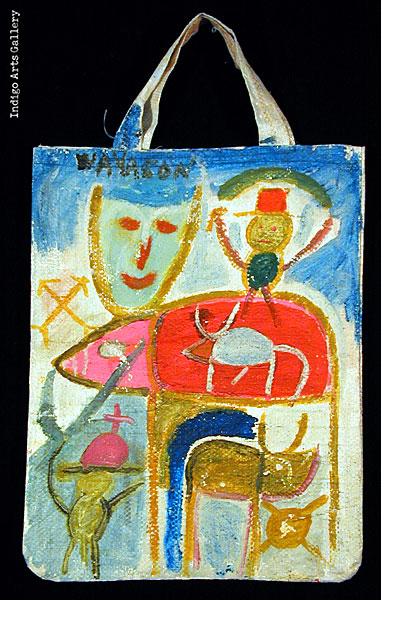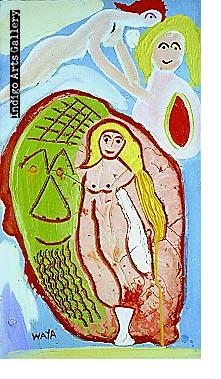
Exhibition dates: September 2018 through February 2019
Reception: October 11, 6 to 9 pm
Gallery Hours: Wednesday - Saturday, 12:00 - 6:00 pm.
Second Thursdays: October 11, November 8, December 13, 6 to 9pm
Five Cuban Outsiders presents five Cuban artists: Carlos Garcia Huergo, Leandro Gomez Quintero, Mario Mesa, Damian Valdes Dilla, and Wayacon (Julian Espinosa Rebollido). They come to their art from many directions and share little in terms of style, subject or medium. None benefited from conventional artistic training, or exhibits as part of a conventional gallery system. What the artists share is the individual expression of a personal vision.
Most of the Cuban “outsiders” are well educated in the Cuban system, though in fields other than art. Several of the artists, notably Carlos Garcia Huergo, attained a high level of achievement before experiencing a sudden shift in mental state. Carlos is a summa cum laude graduate in Mathematics. In 1990 his mother suddenly died while he was studying in Czechoslovakia. He soon began to exhibit extreme and violent behavior. He returned to Cuba sedated and wearing a strait-jacket. Diagnosed as paranoid schizophrenic, he was hospitalized in Cuba and underwent treatment with psychoactive drugs and electro-shock. In the hospital he began to make artwork, drawing in pastel colors on recycled cardboard boxes, album covers and magazine pages. “In his drawings, he harmonizes the reality of the mathematics with personal imageries. He recreates a hybrid world of fellows who are always in his conscience; like angels or devils who swarm in his mind speaking to him.”(Samuel Riera) The drawings incorporate extensive text - an overlaying of biblical and popular culture references and numeric sequences which are understood by him alone. His work has been exhibited at Studio Riera in Havana, and individual galleries in the US and Europe.
Damian Valdes Dilla was born in Havana in 1970. He experienced hallucinations and paranoia during his adolescence. He was diagnosed with paranoid schizophrenia and was admitted on two occasions in the Psychiatric Hospital of Havana. During his treatment an early interest in drawing was awakened. As a child Damian had drawn comics in school notebooks. Hospitalized as an adult he began to make obsessively detailed drawings and build careful models of architectural and technological fantasies. Damian is pre-occupied with vehicles of all kinds – cars, airplanes and spacecraft – and with cities of his own imagining. The cities are futuristic, but seemingly from a nineteenth century vantage point, as if designed by Jules Verne. The aircraft blend zeppelins and biplanes with Star Trek. There is an undercurrent of violence in many drawings, with Soviet-era military parades of vehicles and missile-launchers in the streets, and ornate architecture under fiery attack. His artwork reflects his mental state but it has also been a route to some stability in his life. His work has been exhibited through Studio Riera in Havana, through exhibits sponsored by NAEMI (National Art Exhibitions of the Mentally Ill) and individual galleries in the US and Europe.
A forty-year old history teacher in his hometown of Baracoa, in eastern Cuba, Leandro Gomez Quintero expresses a somewhat lighter technological obsession in his art. His passion is for the battered but lovingly-repaired trucks, buses and especially Jeeps, that provide transportation in Cuba. Leandro uses paper, cardboard and assorted pieces of recycled plastic and rubber to create painstakingly detailed models of vintage American vehicles. Each is individually painted and detailed to recreate the original vehicle, whether a 1952 Willy’s Jeep, a 1942 Dodge Power Wagon or a Ford truck. Each is “personalized” with the markings of its owners and the awesome cargo they carry – whether packages, pipes, lumber or refrigerators. As such they present a microcosm of 20th century Cuban history and Cuban life today. Leandro says “They bring humor and call attention to the fact that we are an isolated community within a country that has been isolated for many years. By showing the people a part of their every day lives in a lighthearted way, they come to appreciate and can smile at some of the difficulties that we encounter in just trying to live our lives and getting from one place to another.” For the last two years Leandro has exhibited his work in Santa Fe, New Mexico, and has brought the proceeds back to Baracoa to rebuild his home, which was flattened by Hurricane Matthew.
The late Mario Mesa (1928 - 2016) was a Cuban artist born in Güira de Melena in the Province of Havana. He came to Miami in the infamous Mariel Boatlift of 1980. Like many of the marielitos, he had been a political prisoner and a mental hospital patient in Cuba, and lived a very hard life. "I was abandoned at birth. I was poor and couldn't go to school. I never played the games children play. I was always working." He recalled working in sugar and tobacco fields, packing groceries, begging, and at the age of 19 working at the beachside casinos near Havana. After the revolution he worked for a time as an electrician for a government bureau. He started painting after his arrival in the United States, while he was hospitalized for a nervous breakdown. "When I got sick I lived in the streets. I had always been very neat and clean, but everything changed. When I got better I had to help myself. I started painting to give something back. Thanks to painting I got better." Mario’s paintings primarily depict animals – haunting birds, dogs and horses – with which he seems to have been far more comfortable than with people. When human figures appear they are usually marginal, and visibly tormented. Mario’s work was exhibited widely during his lifetime, in exhibits sponsored by the NAEMI as well as in private galleries.
The artist known as Wayacon was born Julian Espinosa Rebollido in 1931 in Guanaroca, in the province of Cienfuegos, Cuba. Interviewed by Gerald Mouial in 2003 he said, “I am of humble origins. At present, I am 72 years old, but officially I am 62. When I was born it was necessary to pay for the (birth) registration... Afterwards, in 1941, my birth was registered.”
Wayacon is a self-taught Cuban painter who seems remarkably unifluenced by the work of other artists or the predilections of critics. He explained his nickname: “Wayacon is a fish that swims in all kind of water, both dirty and clean. I was called the same thing because as a youngster I was rather unruly. I lived inside the Cemetery of Reina and inside an abandoned Spanish fortress. I lived inside the tombs; nobody disturbed me and I took my girlfriends there.”
Like his namesake, Wayacon is comfortable in all media - wood, canvas, scraps of cardboard, articles of clothing and mixed media, incorporating wax, buttons, pieces of wood, forks and spoons into the texture of his paintings. He also makes sculpture – mostly of wood and bones. “I began painting when I was a child, but at that time there were not many opportunities.… At that time I worked with bone a lot, I sculpted it. I had not attended art school. I lived here, I had a workshop, and I sold my paintings. I barely attended school. I studied until third grade, I have learned mostly from others.” Today he lives primarily in the Villa Clara town of Remedios, but he exhibits his art with a group of self-taught artists in Cienfuegos: “I live a nomadic lifestyle. I sleep here in Remedios or in a house of a friend of mine, or in the house of José, or in the house of Aida Morales, or…”
Review in Philadelphia Inquirer:
Wharton Esherick, re-interpreted, and other must-see shows in Philadelphia galleries right now
by Edith Newhall - Philadelphia Inquirer November 20, 2018

